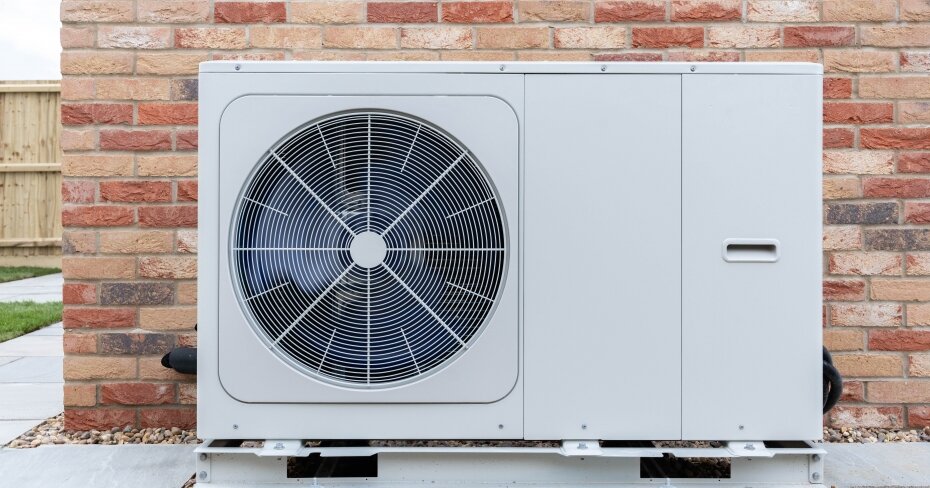What is a heat pump and how does it work?
By: Michelle Bates on January 4, 2024
When winter strikes, a warm home is indispensable. But maintaining a cozy environment requires you to be mindful of your monthly budget. With energy costs as high as they are in Canada, the last thing you want is an energy bill that sends shivers down your spine.
Increasingly, people are turning to more efficient alternative heating methods. Heat pumps, for one, can offer potential long-term savings that traditional furnaces do not.
What is a heat pump and how does it work?
A heat pump is an all-season electric heating and cooling unit that draws in outdoor air to heat your home during colder months and removes heat from your home during warmer months.
The system is similar to that of a refrigerator or air conditioner. When heating your home, energy from an air or ground source is carried into the device and amplified with electricity, pumping warmer air into the home. In warmer months, the home becomes the energy source and thermal energy is removed from the space through the pump to make the home cooler.
Is it cheaper to run a heat pump or a gas furnace in Ontario?
While heat pumps can cost more to purchase than a furnace, they’re generally cheaper to run. The amount of electric energy it takes for a heat pump to pump heat is less than the amount of thermal energy it produces, making it operate at 100% efficiency or more. Furnaces, however, operate at less than 100% efficiency, as some of the energy used to create heat is not used to warm the home.
As a result, a heat pump can save you money on your energy bill by using less energy to produce warm air. However, the energy efficiency of a heat pump depends on the contrast in temperature between the air outside and your home.
The more electric energy that’s required to transfer thermal energy, the less efficient the unit is. That’s why there are varieties of heat pumps that can suit different climates.
Fortunately, the Government of Canada’s Greener Homes Initiative offers $1,000 to $5,000 grants to Canadians who install eligible full heat pump systems or replace their existing heat pump units. So, you can get a return on your investment and save on energy at the same time.
Related: Solar panels and their impact on home insurance
What are the drawbacks of installing a heat pump?
Besides the upfront cost being higher, heat pumps are not one-climate-fits-all. If you don’t have the right heat pump for your home and climate, it could be less beneficial.
“Heat pumps have come a long way, and manufacturers now advertise units specially designed to perform normally in weather as cold as -15 Celsius,” says Stefan Tirschler, director of product and underwriting at Square One Insurance. “But some models will struggle in certain conditions.”
An ill-suited heat pump can require a supplementary heating source, which could lessen the benefit of having an energy-efficient system in the first place.
Cost of installing a heat pump
A licensed heating and cooling contractor can replace a gas furnace with a heat pump. In order to qualify for a grant, the heat pump should also be on the government’s eligible product list.
The cost of installing a heat pump can vary depending on the type of system you’re purchasing and the system you’re starting with. Prices may look like the following:
Ground-source heat pump: Approximately $30,000
All electric heat pump: $14,500 to $22,000
Hybrid air-source heat pump plus new furnace: $14,500 or more
Ductless split air-source heat pump: $4,000 to $6,000
Air conditioner to air-source heat pump: $4,000 to $6,000
Is the cost of a new heat pump covered by insurance?
If your existing furnace is damaged by a covered peril, you can choose to upgrade to a heat pump, but your insurance will only cover the cost of the original heating system.
“As home insurance providers, our role is to repair or rebuild someone's home — as it was before a loss — but a customer can still choose to add optional upgrades along the way,” says Tirschler. However, he adds, home insurance typically won’t cover those upgrades.
“If those upgrades didn't exist, then they were not included in our rebuilding estimate, and therefore the customer was not paying a premium to insure them.”
For example, says Tirschler, if someone wanted to replace their existing furnace with a heat pump following a housefire (a covered peril), their insurance company would cover up to the cost of the conventional furnace, but the customer would have to chip in the rest to upgrade to a heat pump – just as they would if they were upgrading their floors after a claim.
“We would cover the cost of repairing the original features, but the customer is free to add upgrades at their own cost,” he says.
Related: What is an uninsurable peril?
What are the insurance implications of installing a heat pump?
In the eyes of insurers, “heat pumps are not considered more risky than conventional furnaces,” says Tirschler.
But, because central fan-forced heat pump systems can be more expensive than furnaces, your home insurance policy will look a little different.
“We need to include that slightly higher cost in our rebuilding estimate,” says Tirschler. “However, compared to the overall cost of rebuilding a home, a minor difference in your amount of coverage should have a negligible impact on your home insurance premium.”
To offset any potential costs associated with insuring your new heat pump, explore any discounts you may be eligible for and shop around for home insurance.
Read next: Landscaping and home insurance: what's covered?
Save 32% on average on home insurance
Compare 50+ quotes from Canadian providers in 3 minutes.


